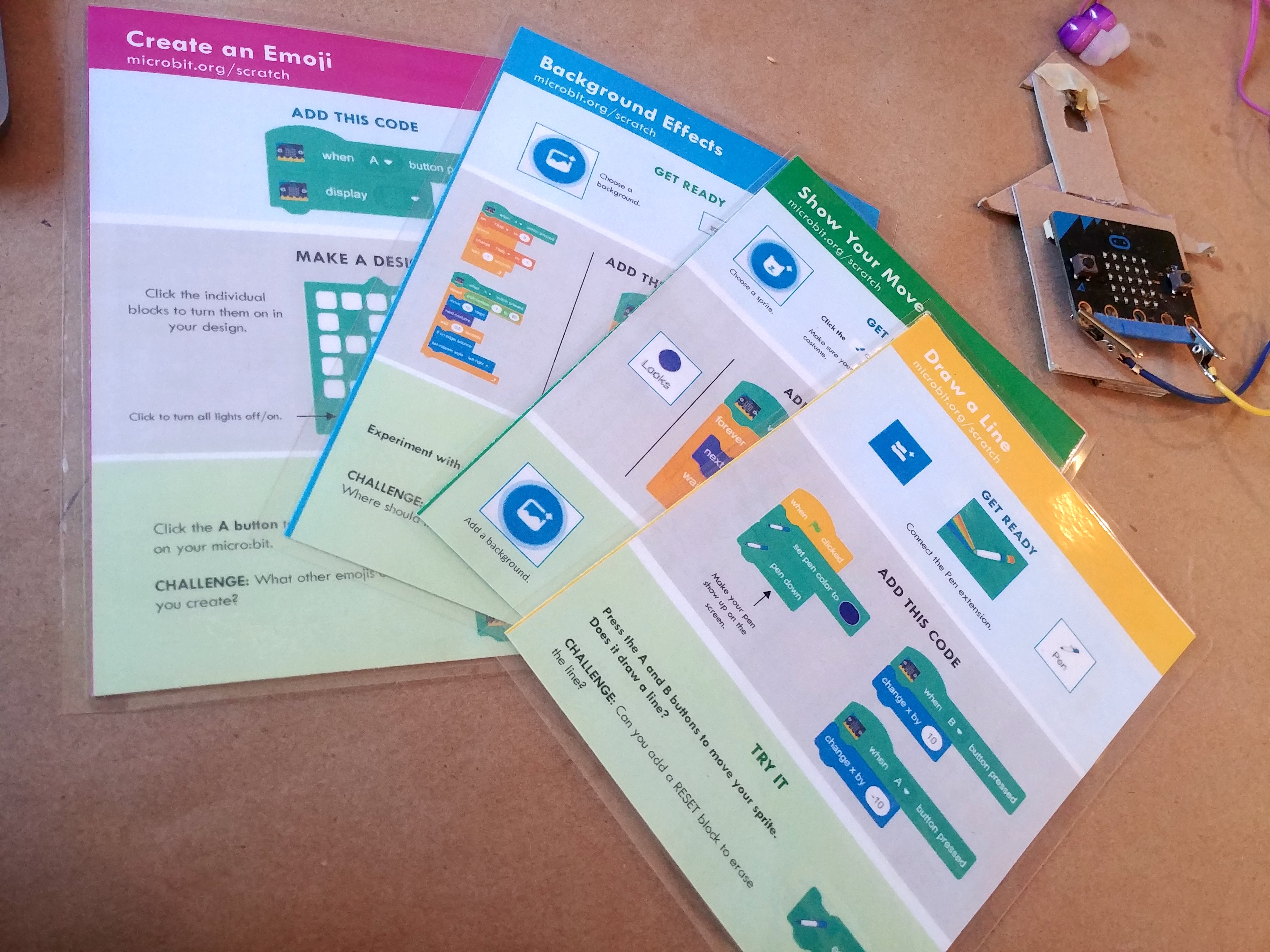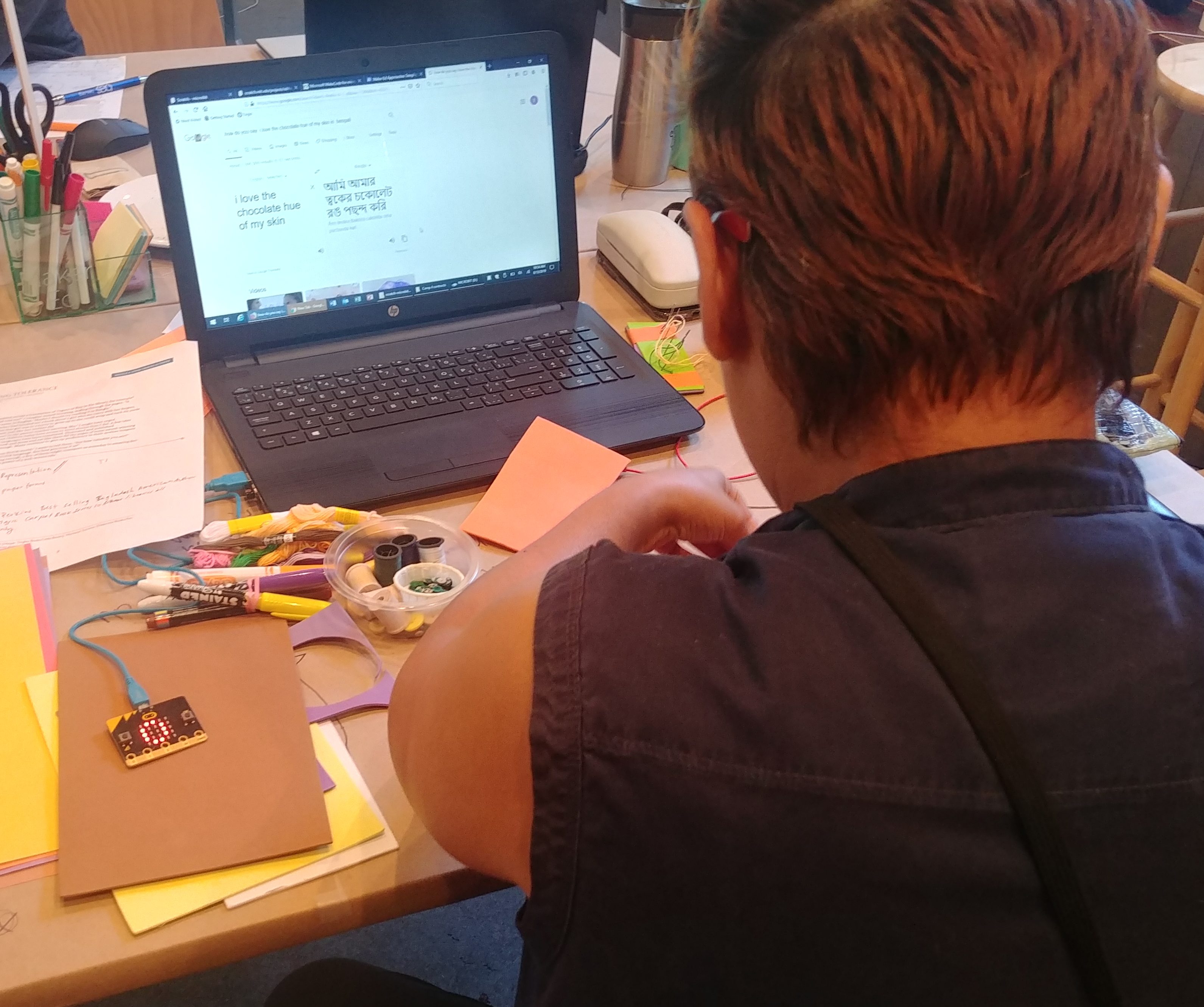Weaving together themes of social justice with ELA standards, block-based programming with Scratch, and physical computing with micro:bit, this series of linked activities from our Approaches to Maker Education workshop showcased a learning progression that integrated all three of our Approaches to Curriculum Integration: Tinkering to Discover, Making to Learn, and the Application Project. Through this prototype, we wanted to showcase how making can be used as tool for social justice while supporting learning across many areas of a curriculum. Read on for more details about how we approached this challenge!
Stage 1: Tinkering to Discover
In order to develop an initial understanding of block based programming, we kicked off with an open ended exploration of micro:bit and Scratch (with Scratch Link). We used these Scratch Cards for micro:bit to get started in connecting the physical world with the virtual world and let participants explore at their own pace. They investigated different features, that we would integrate throughout the learning progression, such as: using the button and shake features on the micro:bit to animate the sprite movements, adding different backgrounds, and changing the displays on the micro:bit.
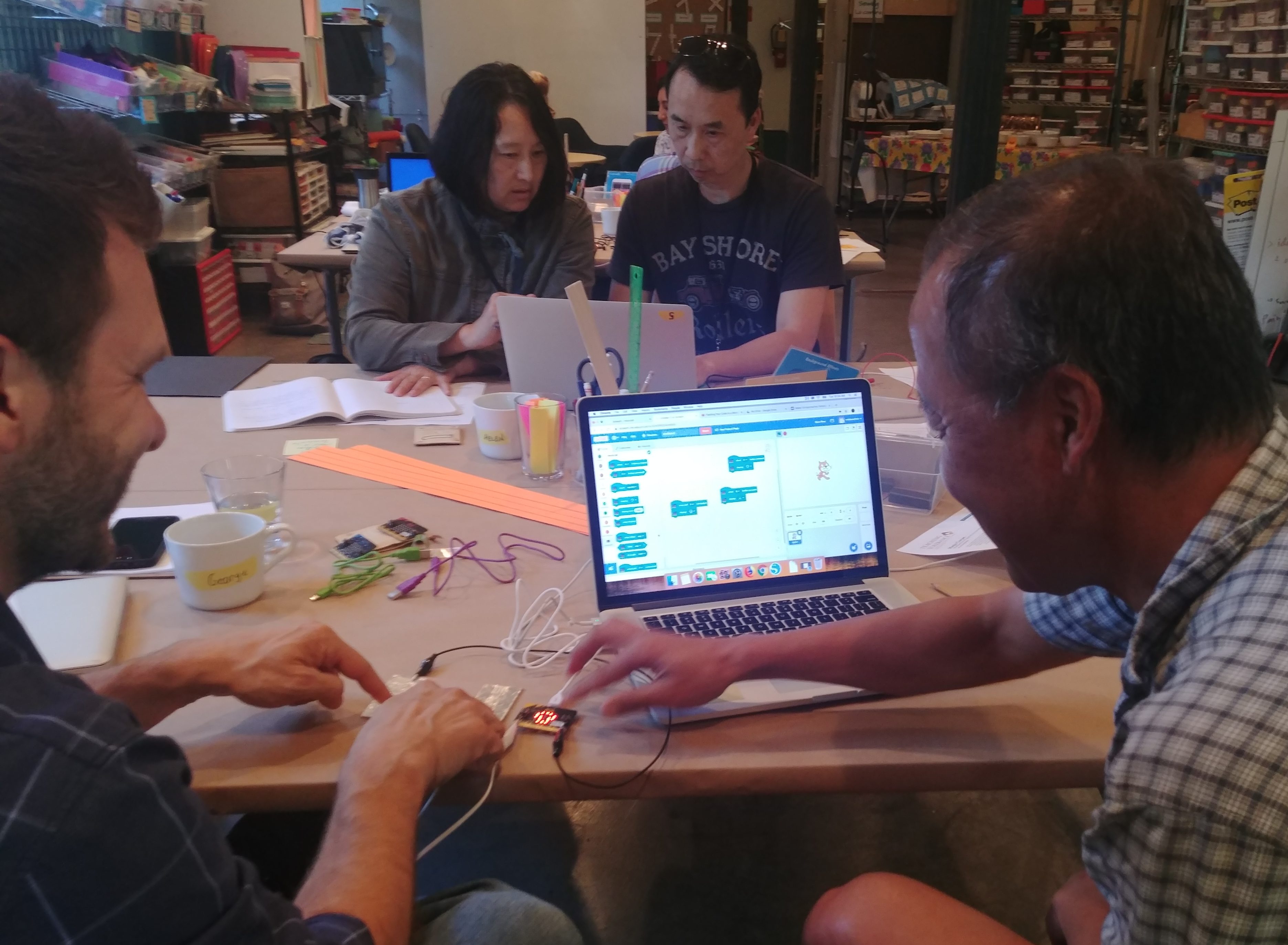
Stage 2: Making to Learn
After exploring the micro:bit, we dove into an analysis of a social justice-based text, “Magic Carpet” by Mitali Perkins, which was based on a lesson plan from Teaching Tolerance, an organization that supports social justice and anti-bias education through free resources to educators. In this essay, Perkins explores the role of identity and assimilation by “learning to see her rich heritage through critical colonial eyes” and “her struggle to reclaim her history as an adult.” We analyzed the way key themes are layered in the text, such as struggles to adhere to dominant culture, intergenerational connections to family, and the role of identity.
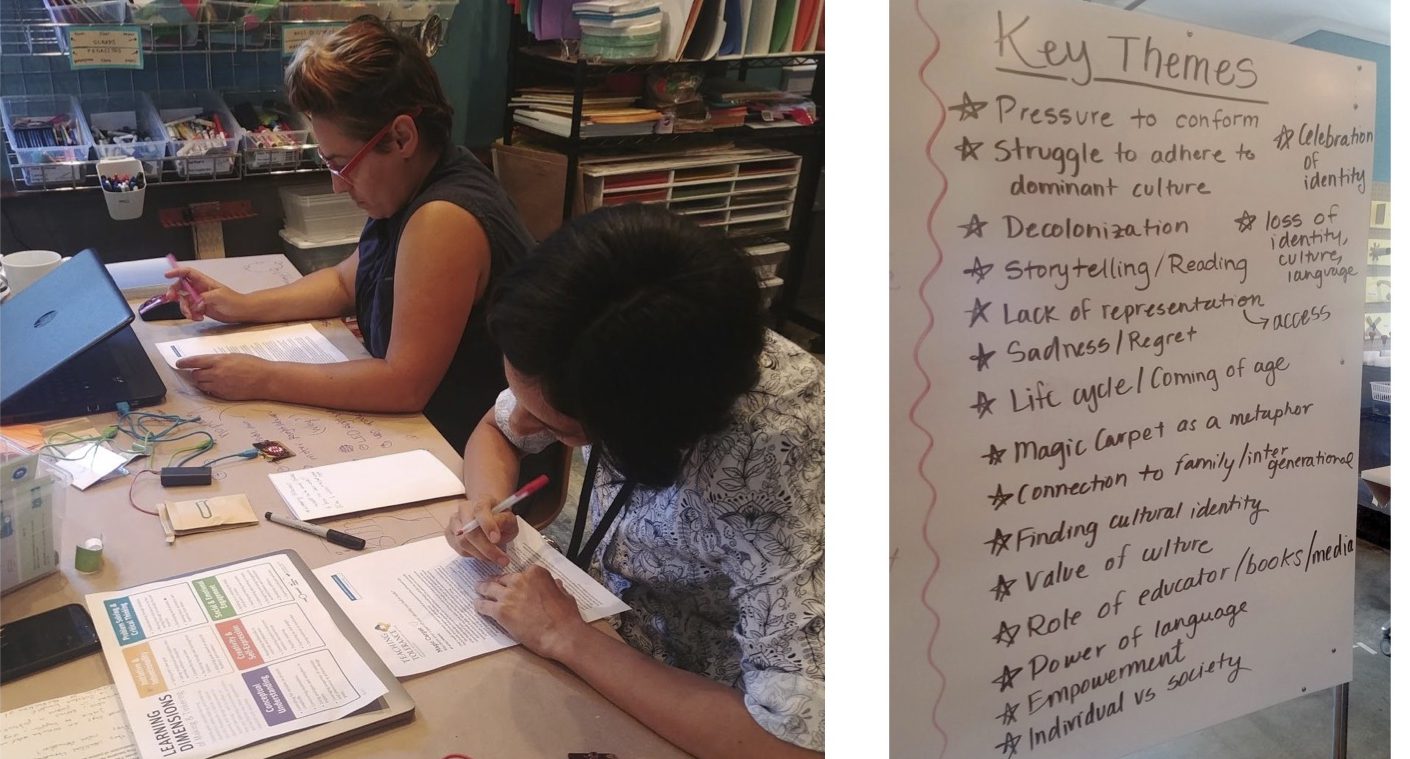
In order to deepen our understanding of theses themes, pairs chose a specific sentence or phrase from the reading that encapsulated a theme and created a representation of it. We used external switches made out of cardboard and foil to create a symbolic, physical interface, while Scratch allowed for participants to integrate more interactive and storytelling elements into their projects. One of the groups animated a magic carpet flying into or away from a castle when different buttons were pressed, representing the result of our decisions when accepting or rejecting our cultural heritage. Another included a small book that changed the display on the micro:bit when it was opened, which represented the importance of oral traditions communicated through storytelling. We also had a group that translated a sentence from the text into many different languages that appeared when a switch was pressed in order to represent the importance of valuing multilingualism.
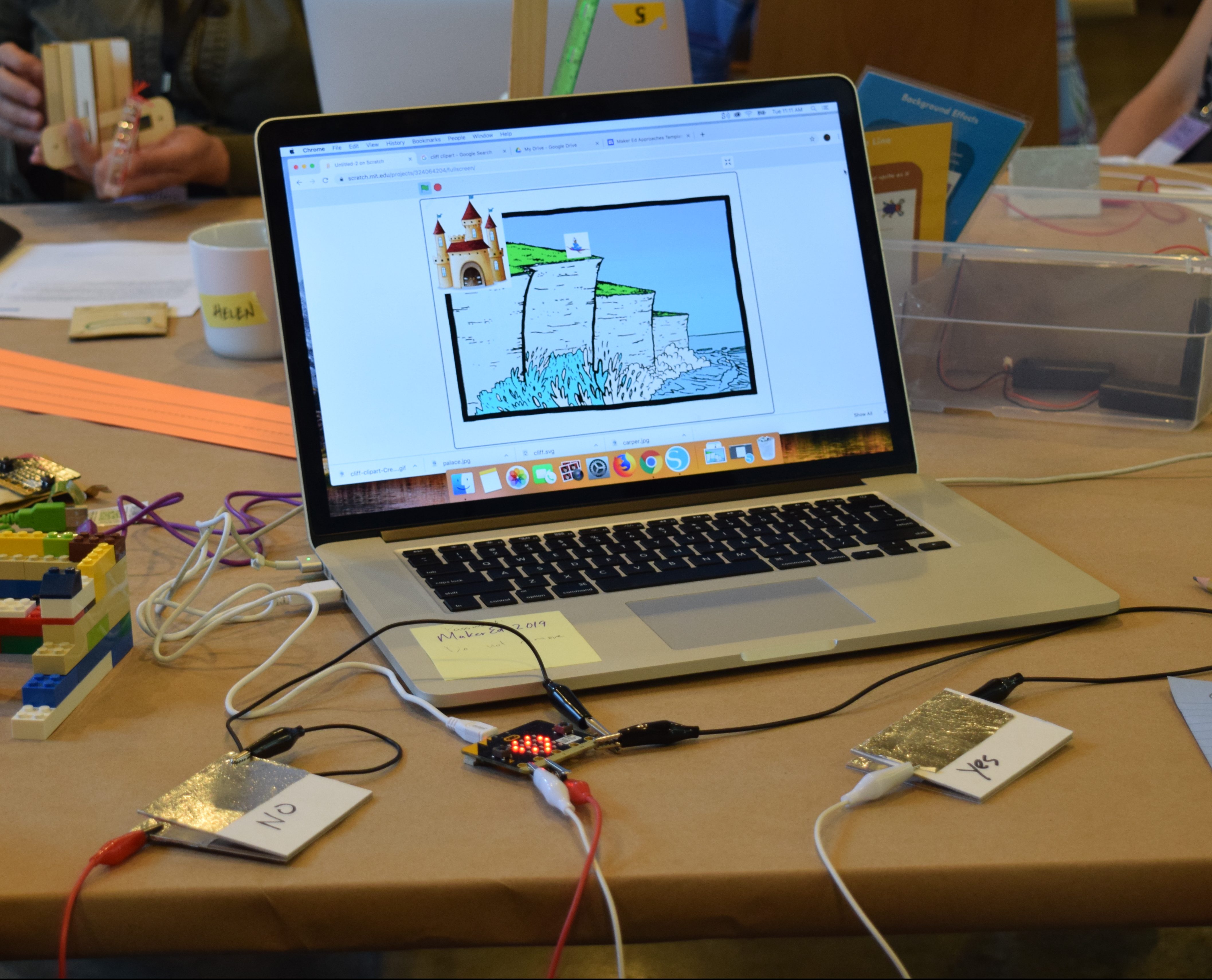
Stage 3: The Application Project
For the final stage of this learning progression, we reflected on our own identities and culture, which was rooted in Teaching Tolerance’s use of Social Justice Standards as a road map to anti-bias education. One of their anchor standards for identity is centered around family history and culture, so we asked participants to use micro:bit and scratch to represent their own past and present reactions to family traditions. They used this prompt to apply and demonstrate their knowledge of animations in scratch, programming with micro:bit, and using external switches. As we all have differing relationships to our family, this prompt also resulted in a variety of emotions, including both struggle and celebration. We saw many different projects emerge. One participant animated a story to represent their experience with speaking a different language while growing up; someone else animated their relationship and harmony with nature; another created a physical birthday cake that represented celebration and traditions with their family; and someone else created a dumpling out of fabric to tell a story about her family’s relationship to food.
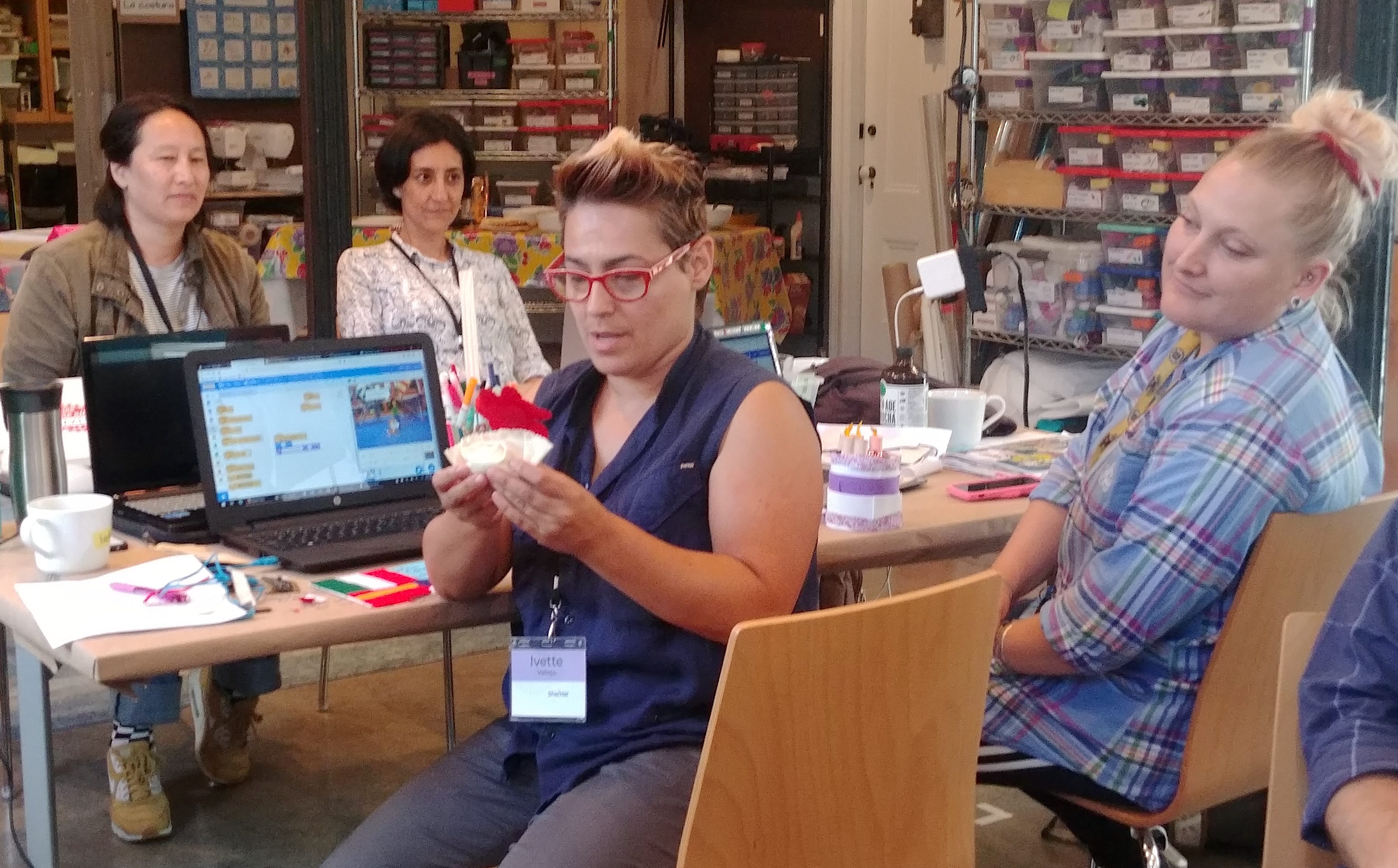
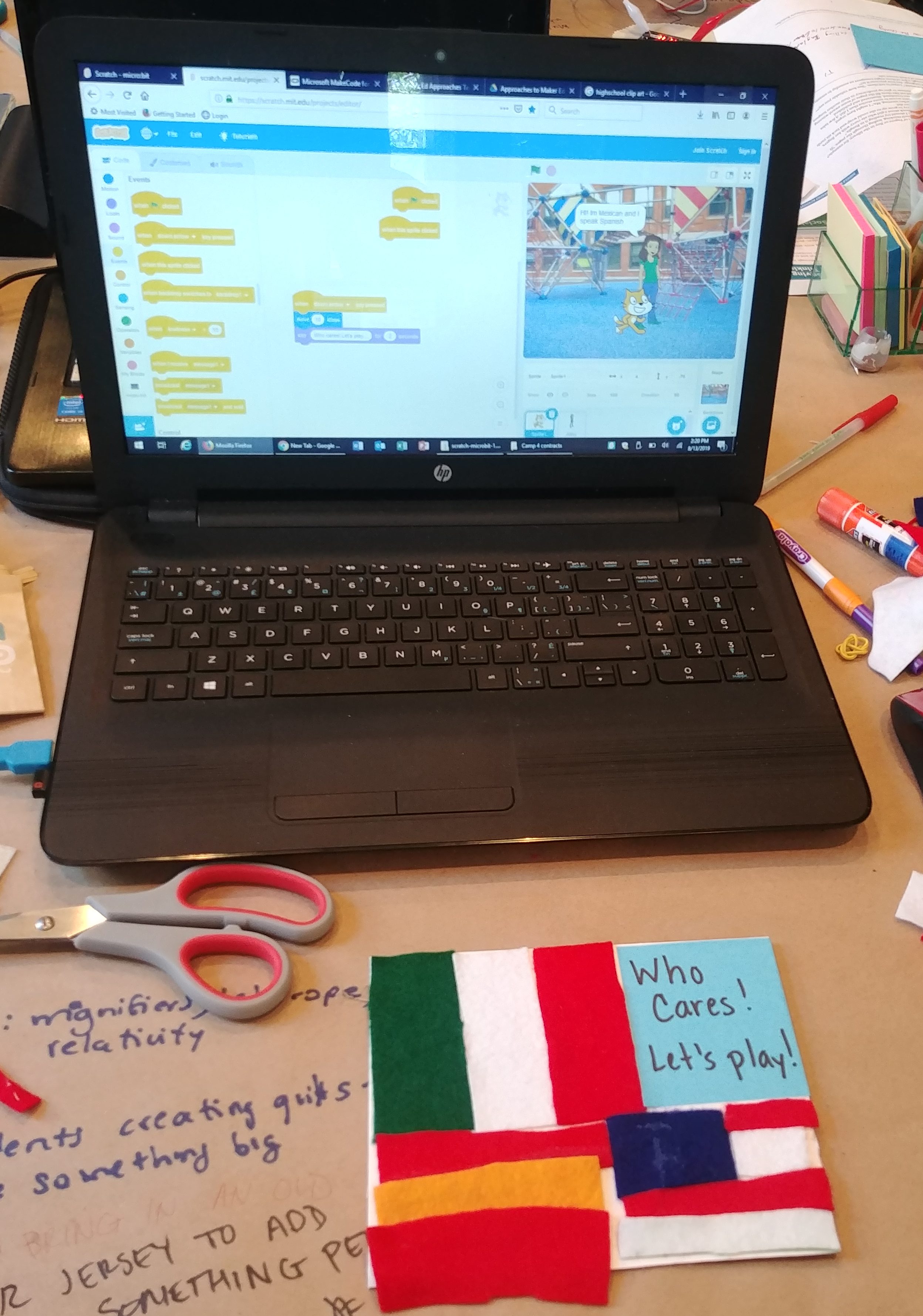
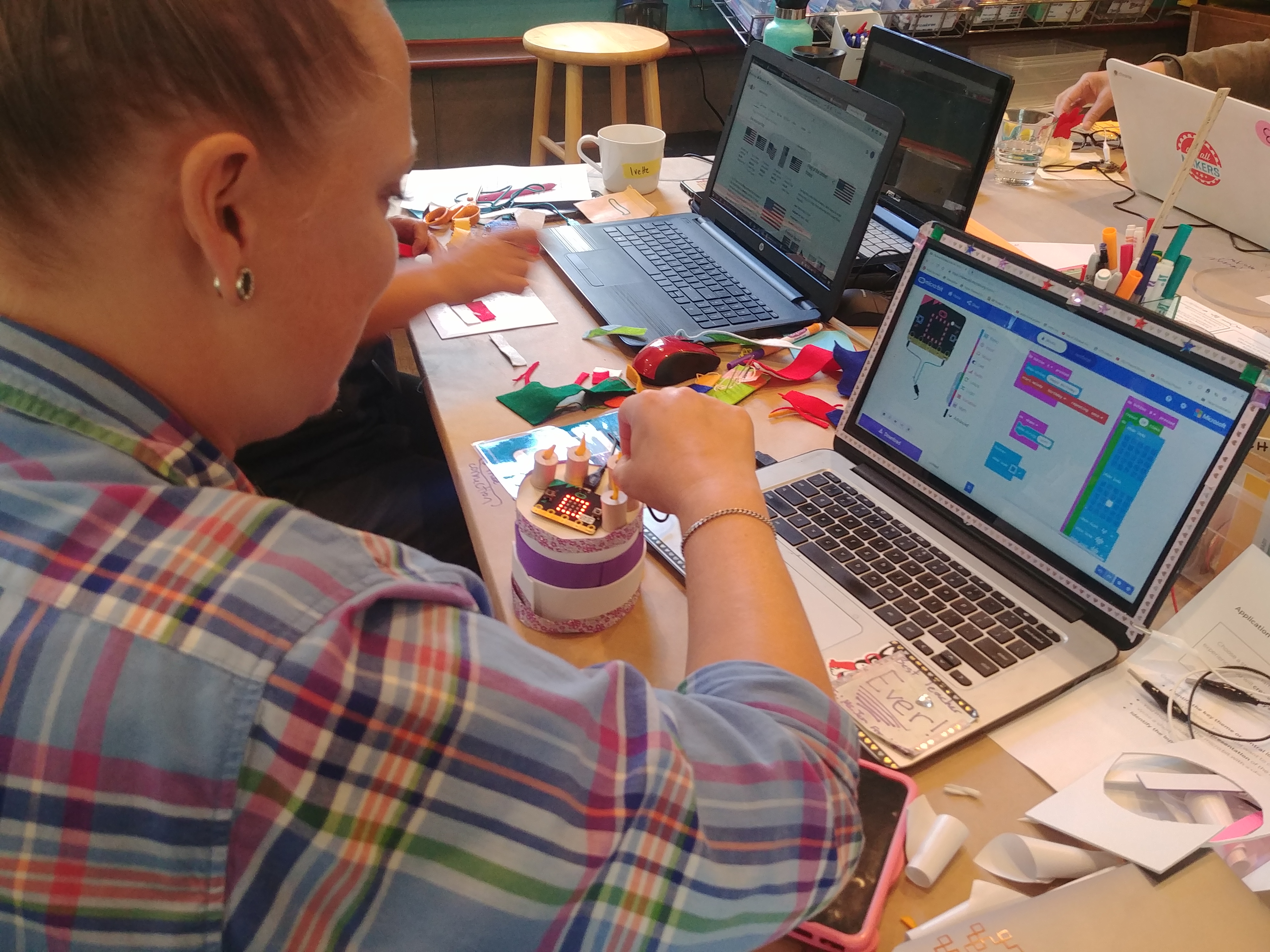
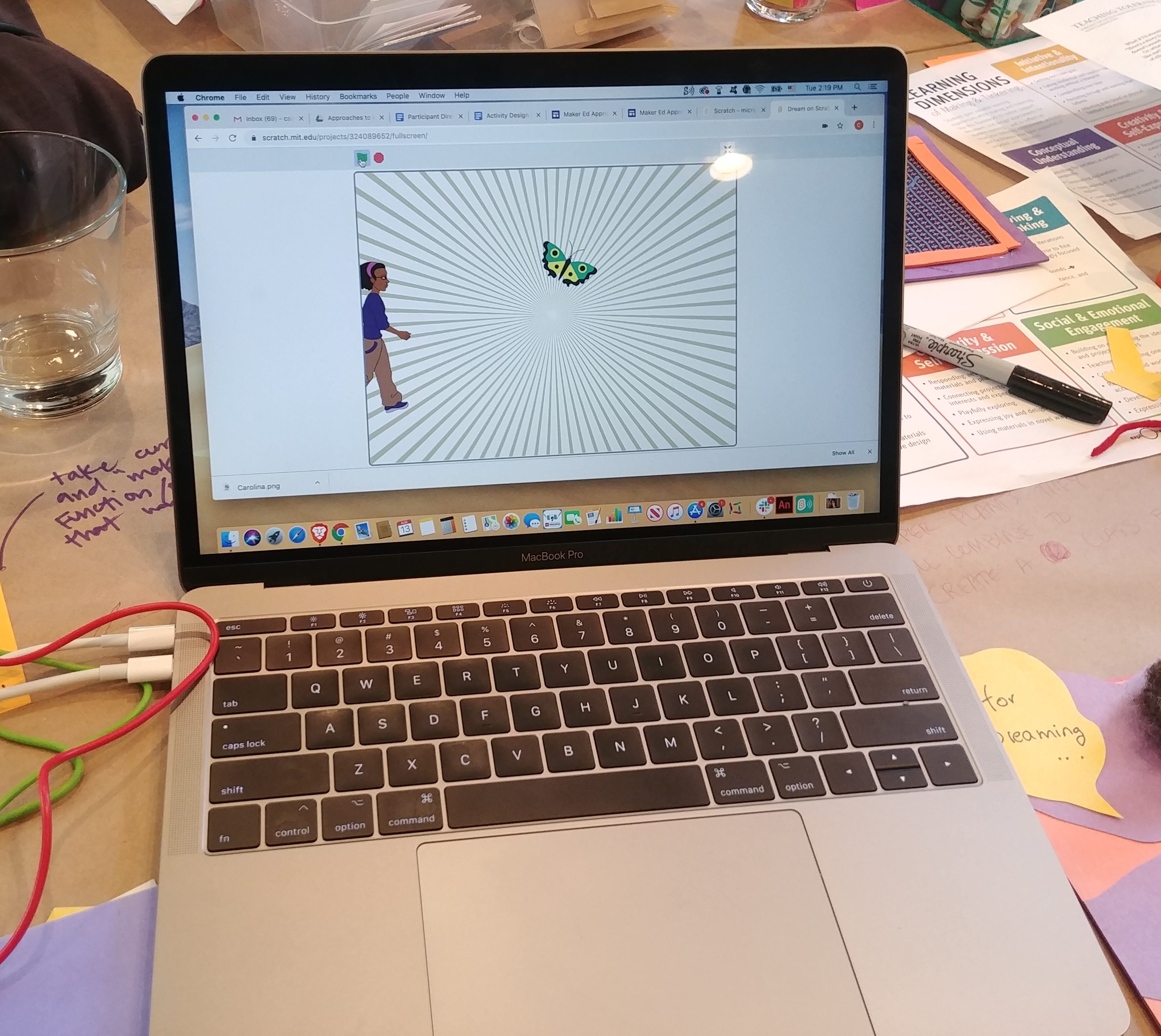
What Comes Next?
As we plan for our upcoming 2019-2020 workshops, we are continually reflecting on the design of our activities based on feedback from our workshop participants. One big takeaway from this workshop for us is that we need to ease the workflow of linking the micro:bit to scratch in order to give learners more time to tinker with the programming blocks. The beginning of the activity required a lot of trouble shooting due to some laptops not supporting Scratch Link as an external download. We also want to make sure we give participants more time to process and reflect on the social justice themes in the activity, as well as structure the final project to be more sensitive to a variety of lived experiences. From this initial prototyping experience, we are looking forward to exploring further ways that maker-centered learning can be used as a tool for social justice and how we can support educators in integrating different voices, cultures, and perspectives in their curriculum design!
Resources in this Blog Post
Interested in learning more about incorporating maker centered learning in your classroom, library, museum, after school program, or makerspace? Explore our workshop offerings!
Also check out these online resources:
- Maker Ed’s Approaches to Curriculum Integration: A free, self-paced online learning module
- Maker Ed’s Designing Learning Progressions: A free downloadable resource for maker educators
- Scratch Link: A tiny circuit board designed to help kids learn to code and create with technology
- Scratch Cards for micro:bit: These activity cards provide an easy way to explore Scratch 3.0 with the BBC micro:bit
- Examining Identity and Assimilation: A lesson plan from Teaching Tolerance
- Social Justice Standards: The Teaching Tolerance Anti-Bias Framework

